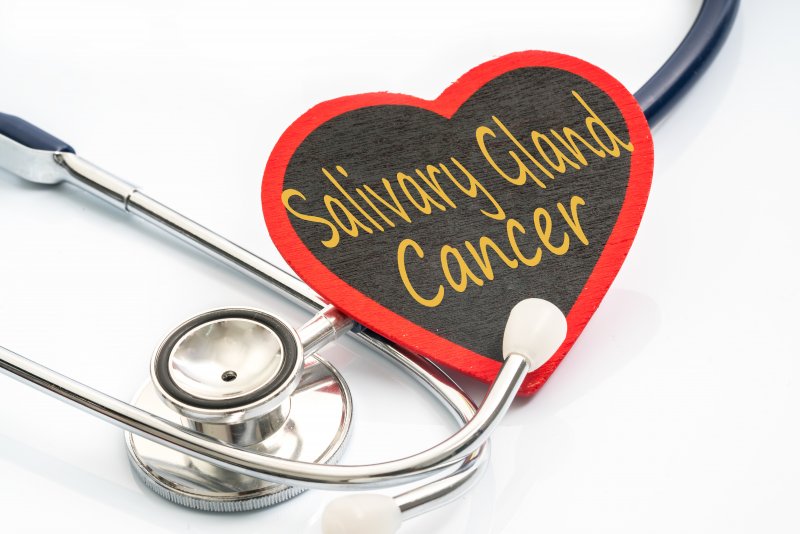
According to the American Cancer Society, salivary gland cancer is one of the less common forms of cancer, affecting roughly 1 person out of every 100,000. For people who are unfortunate enough to fall into that category, the news can seem devastating. However, it doesn’t have to be; learn more about this condition, how it’s diagnosed, and how it can often successfully be treated.
What is Salivary Gland Cancer?
Your salivary glands produce the saliva that helps digest food; the parotid glands – the largest salivary glands – are where most salivary gland tumors form, though they can still appear on the smaller glands. Most of these tumors are benign, but there are several different types of malignant tumors that can appear as well.
The causes for this type of cancer are unclear. It does affect males more often than females, and the risk tends to increase with age. Exposure to radiation also seems to make it more likely.
How Can Salivary Gland Cancer Be Diagnosed?
Thanks to its location, salivary gland cancer can often be found in its early stages during routine dental appointments. Commonly, it’s identified as a lump on one of the glands; it can also cause persistent pain, changes to the size and shape of one side of your face or neck, numbness, weakness, fluid draining from the ear, and trouble with opening the mouth or swallowing. Imaging tests such as X-rays can be used to find suspicious areas, and a biopsy (removing and examining affected cells) can be performed to confirm the diagnosis.
Checking for cancer in the mouth is often part of a routine check-up by your dentist in Waverly.
Can Salivary Gland Cancer Be Cured?
In general, finding salivary gland cancer early on gives you a better chance of a successful treatment. When found while it’s still localized (not having spread beyond the affected gland), the five-year survival rate is 93%; at these early stages, surgery can often be employed to remove the affected cells. In more advanced cases, radiation therapy and chemotherapy may be used instead. Although the primary goal of the treatment is to cure cancer, the treating doctor will also try and preserve the function of the nearby tissues, nerves, and organs.
The most important factor in curing salivary gland cancer is identifying it early. By keeping up your biannual dental visits, it’s more likely that any tumors can be found and examined before they have a chance to spread too much. If you’re having any worrisome symptoms in your mouth, make an appointment with your dentist right away; it could help save your life.
About the Author
Jonathan Smiley works to create an atmosphere of comfort and trust for his patients. He offers a wide range of restorative, cosmetic, and preventive dentistry options, including an oral cancer screening during regular check-ups. He is a member of the Iowa Dental association and the Academy of General Dentistry. For an appointment at his practice, Smiley Family Dentistry, visit his website or call (319) 352-2270.
